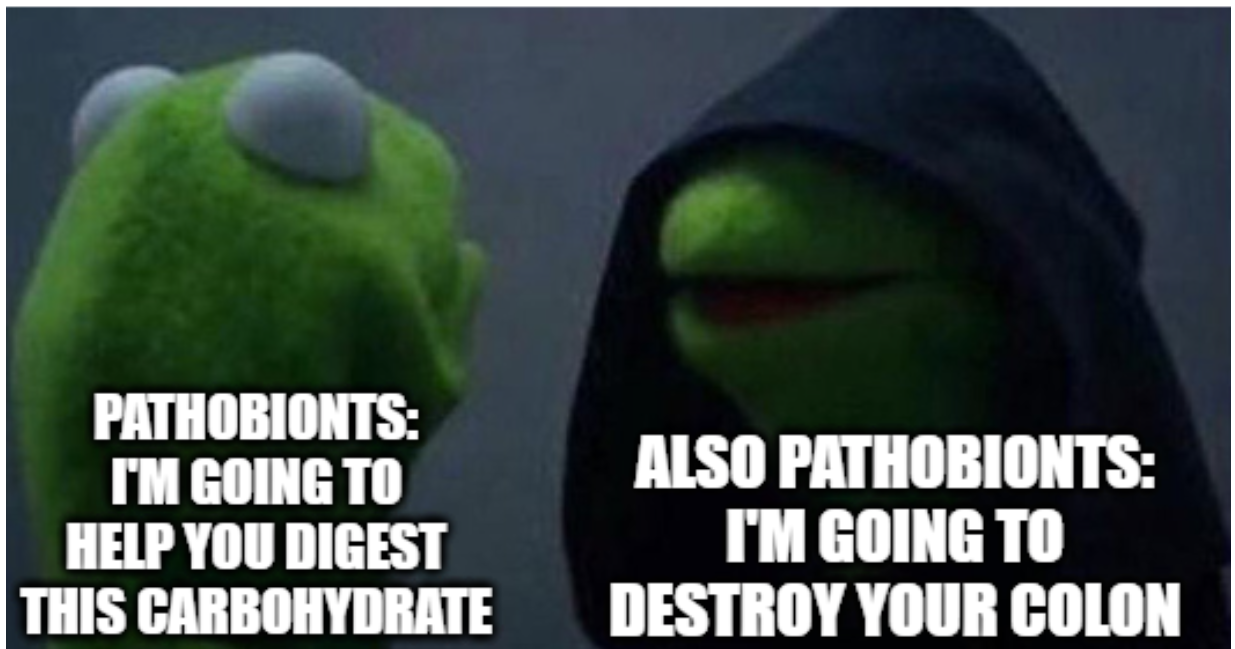Pathobionts: The opportunists hiding in our microbiomes
The microbes we co-exist with can be friends, foes, or just along for the ride. They can also switch between being all of those things…

The external and internal surfaces of our bodies are covered by microbes.
Actually, most surfaces we interact with on a daily basis are covered in them!
And the viruses, fungi, bacteria and archaea that call us home help to make up our microbiomes.
The largest of these is the gut microbiome but we also have skin, oral, urogenital, and respiratory tract microbiomes.
Each of these is colonized by different combinations of microbes and a ‘microbiome’ describes those community members, their habitat, and how they interact with one another.
But we’re still in the early stages here and our understanding of our microbiomes is in its infancy.
That means that a lot of the terms that we use to describe microbiomes (including the word microbiome!) are still being hotly debated.
We also haven’t settled on a vocabulary because so many of the interactions that we see between microbes and their hosts are different from what we’ve observed in plants and animals!
While there are many shared common relationships within the microbiome, there are also new relationships that we’re still trying to understand and define.
We’ve certainly observed the traditional symbiotic relationships (parasitism, mutualism, commensalism, etc), but in microbiomes, microbes can blur the lines of what’s expected.
Some microbes operate as opportunists and can quickly switch from commensal (benefit but do no harm) to mutualistic (everyone benefits) to parasitic (they benefit while harming everyone else).
This highlights the importance of microbial ‘homeostasis’ or community stability because changing environmental conditions can allow these microbes to go from being friends to enemies!
But even that binary description isn’t really accurate and that’s a symptom of us not knowing enough about anything yet to properly define what’s going on here!
But that hasn’t stopped us from trying!
And we’ve recently begun referring to these opportunistic microbes as 'pathobionts.'
A few examples here include:
Bacteroides fragilis - Implicated in Irritable Bowel Syndrome and Colon Cancer
Fusobacterium nucleatum - Typically found in the oral cavity but can cause Gum Disease and has been associated with Colon Cancer
Enterococcus faecalis, Clostridioides difficile, and Klebsiella oxytoca - Have all been shown to be associated with the development of Colitis
Escherichia coli and Proteus mirabilis - Have been seen associated with Crohn’s disease
All of these bacteria are present in our microbiomes or we’re exposed to them consistently in our daily environments.
But how these pathobionts lead to health or disease is still an ongoing area of intense research.
One thing is clear though, and that’s that microbiomes are complicated!
